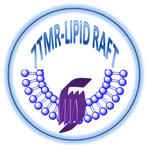Localization of the human oxytocin receptor in caveolin-1 enriched domains turns the receptor-mediated inhibition of cell growth into a proliferative response
| Title | Localization of the human oxytocin receptor in caveolin-1 enriched domains turns the receptor-mediated inhibition of cell growth into a proliferative response |
| Publication Type | Journal Article |
| Year of Publication | 2002 |
| Authors | Guzzi, F, Zanchetta D, Cassoni P, Guzzi V, Francolini M, Parenti M, Chini B |
| Journal | Oncogene |
| Volume | 21 |
| Pagination | 1658-67 |
| Date Published | Mar 7 |
| ISBN Number | 0950-9232 (Print)0950-9232 (Linking) |
| Accession Number | 11896597 |
| Keywords | Animals, Caveolin 1, Caveolin 2, Caveolins/analysis, Cell Division, Clathrin-Coated Vesicles/chemistry, COS Cells, GTP-Binding Proteins/physiology, Humans, Membrane Microdomains/*chemistry, Mitogen-Activated Protein Kinases/physiology, Receptors, Oxytocin/*analysis/physiology |
| Abstract | In this study, we investigated the functional role of the localization of human OTR in caveolin-1 enriched membrane domains. Biochemical fractionation of MDCK cells stably expressing the WT OTR-GFP indicated that only minor quantities of receptor are partitioned in caveolin-1 enriched domains. However, when fused to caveolin-2, the OTR protein proved to be exclusively localized in caveolin-1 enriched fractions, where it bound the agonist with increased affinity and efficiently coupled to Galpha(q/11). Interestingly, the chimeric protein was unable to undergo agonist-induced internalization and remained confined to the plasma membrane even after prolonged agonist exposure (120 min). A striking difference in receptor stimulation was observed when the OT-induced effect on cell proliferation was analysed: stimulation of the human WT OTR inhibited cell growth, whereas the chimeric protein had a proliferative effect. These data indicate that the localization of human OTR in caveolin-1 enriched microdomains radically alters its regulatory effects on cell growth; the fraction of OTR residing in caveolar structures may therefore play a crucial role in regulating cell proliferation. |
| URL | http://www.ncbi.nlm.nih.gov/entrez/query.fcgi?cmd=Retrieve&db=PubMed&dopt=Citation&list_uids=11896597 |
